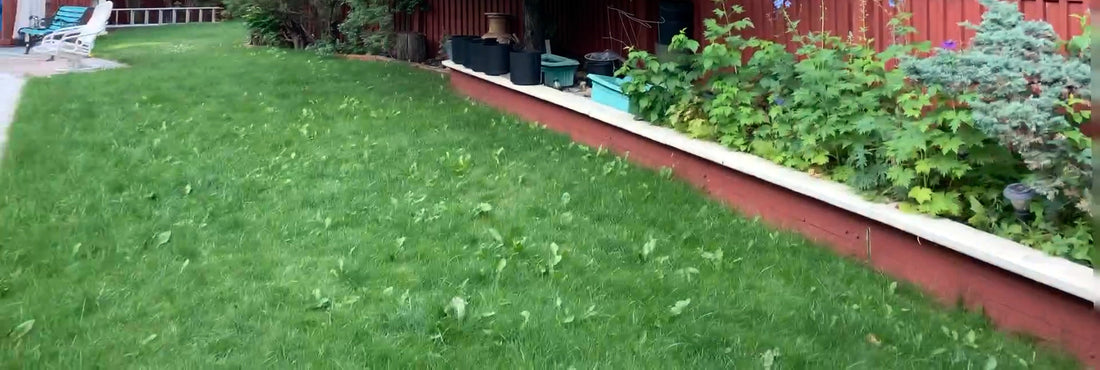
🌱 The Low-Down on the Lawn
Share
Many people believe that a lawn is the easiest way to maintain a yard—but that’s actually the opposite of the truth. A typical lawn is one of the highest consumers of water, chemical fertilizers, herbicides, and your time. It often needs to be mowed weekly, and the environmental cost of maintaining it is surprisingly high.
The pollution created by gas-powered landscaping equipment accounts for an estimated 5–10% of urban air pollution during the growing season. Two-stroke engines, like those found in many lawn mowers, leave about 30% of their fuel unburned. Running your mower for just one hour can produce the same emissions as driving from Calgary to Vancouver.
Time to Rethink the Lawn
One of the best ways to reduce your environmental footprint is to ditch your gas-powered mower. Fortunately, there are better options:
- Electric or battery-powered mowers are widely available and much cleaner.
- Push reel mowers are the most eco-friendly choice. They cut grass cleanly (rather than tearing it like blade mowers), which helps prevent disease and improves lawn health.
If you're thinking, there’s no way I’m mowing my entire yard with a push mower, you’re absolutely right—and that leads to the next point:
Minimize Your Lawn Space
Ask yourself: what do you actually use your lawn for?
Redesign your space with purpose. Consider removing excess lawn and replacing it with perennials, shrubs, or native plants. This will:
- Reduce maintenance
- Lower water and chemical use
- Create a more comfortable, beautiful, and biodiverse space
How to Maintain a Healthy, Chemical-Free Lawn
If you still want to keep a lawn, the good news is that it can be healthy and chemical-free with just a little effort. Here are some suggestions:
- Start with good soil: 4–6 inches of soil encourages deep, healthy roots that retain moisture longer.
- Water wisely: Let the lawn dry out between waterings to push roots deeper. Use a Frisbee or similar item to measure water applied—1 inch is plenty. Water early in the day to minimize evaporation.
- Mow high: Keep grass at 3–4 inches tall. Taller grass shades the soil, retains moisture, and prevents weed seeds from germinating.
- Sharpen your mower blades: Dull blades tear the grass, leaving jagged edges prone to disease.
- Leave the clippings: Grass clippings break down quickly, feeding the soil (they don’t cause thatch—that's usually from over-fertilization and shallow watering).
- Aerate compacted soil: Improve water absorption and top-dress with compost or well-rotted manure as plugs break down.
- Fertilize naturally: Try Corn Gluten Meal in spring—it adds nutrients and can prevent dandelion seeds from germinating.
- Over-seed in spring: Thick, healthy grass crowds out weeds and reduces the need for chemical control.
And Maybe… Just Lower Your Standards
If one of the reasons you want a lawn is to give your kids or pets a place to play, ask yourself if a few weeds are really a problem. A lawn doesn’t have to be perfect to be functional, safe, and beautiful.
Grow Green and Support Your Environment!
By rethinking your lawn care practices—even a little—you can conserve water, reduce pollution, create habitat, and enjoy a yard that’s more resilient and rewarding. Small changes add up to a big difference.
